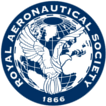During the first century of flight there were distinct periods of intense innovation within the aerospace industry. During these eras advancements in materials, design and propulsion were being made on an almost annual basis leading to the obsolescence of military aircraft within one or two years of their introduction. Today the aerospace industry is heading into another era of intense innovation as unmanned systems are being developed for military, civil and scientific missions.
Go Direct to the Audio Recording
Drawing upon Boeing’s experience in developing and operating sea-going, landbased, aerial and space-based unmanned systems, Darryl Davis, President of Boeing’s Phantom Works will discuss pervious eras of intense innovation within the aerospace industry on how lessons learned from the past might be applied to the opportunities of today.
2010, Sopwith Lecture
Recorded: June 2010
Click the above link to download or listen to the full lecture
About the speaker:
David Koopersmith
Vice President, Advanced Boeing Military Aircraft
David Koopersmith is vice president of Advanced Boeing Military Aircraft. He is responsible for leading the Advanced Military Aircraft business element of Phantom Works in Boeing Defense, Space & Security (BDS). Advanced Boeing Military Aircraft is chartered with creating, shaping, capturing, maturing and transitioning new business opportunities to the Boeing Military Aircraft business unit.
Prior to this position, Koopersmith was vice president and program manager of the X- 45 UAS programs for BDS. He was responsible for leading Boeing’s X-45A, X-45C and X-45N team in creating survivable, autonomous, long-range unmanned systems for the Defense Advanced Research Projects Agency, U.S. Air Force and U.S. Navy.
Previously, Koopersmith was general manager for the C-130 Avionics Modernization Program (AMP). He has more than 30 years of program management, engineering, business development and production experience on numerous military aircraft programs including the AV-8B Harrier II and F/A-18E/F Super Hornet. During his F/A- 18E/F assignment, he received the Excellence in Acquisition Award by the United States Navy Program Executive Office for Tactical Aircraft (TACAIR).
The Adv BMA vice president holds a bachelor’s degree in aeronautical engineering from Rensselaer Polytechnic Institute. He is a member of American Institute of Aeronautics and Astronautics (AIAA) and International Council on Systems Engineering (INCOSE).
This Lecture event was sponsored by:
Royal Aeronautical Society Named Lectures
Do More
BROWSE: more recorded lectures
LEARN: more about the Royal Aeronautical Society lecture events
APPLY: to become a member of the Royal Aeronautical Society
Know somebody this would appeal to? Share it on your favourite services below
tom Works in Boeing Defense, Space & Security (BDS). Advanced Boeing Military Aircraft is chartered with creating, shaping, capturing, maturing and transitioning new business opportunities to the Boeing Military Aircraft business unit.
Prior to this position, Koopersmith was vice president and program manager of the X- 45 UAS programs for BDS. He was responsible for leading Boeing’s X-45A, X-45C and X-45N team in creating survivable, autonomous, long-range unmanned systems for the Defense Advanced Research Projects Agency, U.S. Air Force and U.S. Navy.
Previously, Koopersmith was general manager for the C-130 Avionics Modernization Program (AMP). He has more than 30 years of program management, engineering, business development and production experience on numerous military aircraft programs including the AV-8B Harrier II and F/A-18E/F Super Hornet. During his F/A- 18E/F assignment, he received the Excellence in Acquisition Award by the United States Navy Program Executive Office for Tactical Aircraft (TACAIR).
The Adv BMA vice president holds a bachelor’s degree in aeronautical engineering from Rensselaer Polytechnic Institute. He is a member of American Institute of Aeronautics and Astronautics (AIAA) and International Council on Systems Engineering (INCOSE).




